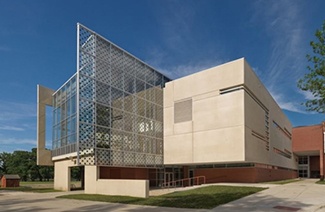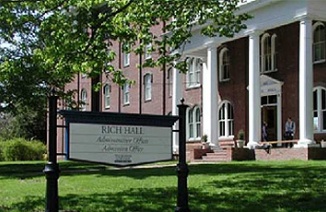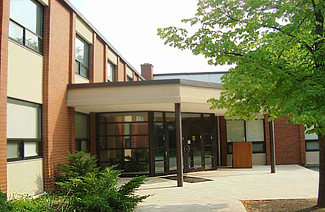SAT备考的后期,真题的练习是最佳的备考内容。大量的通过真题重复练习,能够让我们更好地掌握一些考试的技巧。同时对于考试的整个节奏,也会有更好地把握,因此下面小编为大家整理了详细的内容,供大家参考,希望帮助大家更好地备考SAT考试。
Plants, and all other living things, require nitrogen for growth; it is an essential component ofnucleic acids and proteins. Although air is mostly nitrogen, this gaseous form is inaccessible toplants and must be fixed into ammonium to render it biologically relevant. Soil bacteria calledrhizobia fix nitrogen, but to do this they must first take up residence inside the roots oflegumes like pea, alfalfa, clover, and soybean.
Soon after a legume begins to grow, rhizobia invade its root hairs and multiply, causing theplant to form specialized organs—nodules—that contain the proliferating bacteria. Thissymbiotic arrangement benefits both parties: legumes can thrive without nitrogen fertilizersonly if they have functional nitrogen-fixing nodules, while the bacteria receive the energyneeded to multiply and fix nitrogen from the plant. When the plant dies, the fixed nitrogen isreleased into the soil so other plants can use it. This process has significant implications foragriculture, as nitrogen is the most common nutrient deficient in the earth’s soil and, thus,the one most commonly supplied by chemical fertilizers.
Rhizobia are a diverse group taxonomically, genetically, and metabolically. They can be foundin distant genera. Their symbiotic trait appears to have arisen independently multiple times byhorizontal transfer of genes. However, it is not thought that this horizontal gene transferis sufficient to confer symbiosis, or to explain the biodiversity of rhizobia. There must beselective pressures preventing or permitting the expression of the acquired symbiosis trait andadaptive mechanisms to deal with these pressures. But neither the pressures nor themeasures taken to circumvent them are known.
What can reasonably be inferred about the fixed nitrogen released when a plant dies?
A.It is biologically insignificant because it reverts to its gaseous form.
B.It is not sufficient to maintain adequate nitrogen levels in soil.
C.It is less useful for other plants than the nitrogen found in chemical fertilizers.
D.It is not a consideration in farmers' decisions regarding agricultural practices.
Plants, and all other living things, require nitrogen for growth; it is an essential component ofnucleic acids and proteins. Although air is mostly nitrogen, this gaseous form is inaccessible toplants and must be fixed into ammonium to render it biologically relevant. Soil bacteria calledrhizobia fix nitrogen, but to do this they must first take up residence inside the roots oflegumes like pea, alfalfa, clover, and soybean.
Soon after a legume begins to grow, rhizobia invade its root hairs and multiply, causing theplant to form specialized organs—nodules—that contain the proliferating bacteria. Thissymbiotic arrangement benefits both parties: legumes can thrive without nitrogen fertilizersonly if they have functional nitrogen-fixing nodules, while the bacteria receive the energyneeded to multiply and fix nitrogen from the plant. When the plant dies, the fixed nitrogen isreleased into the soil so other plants can use it. This process has significant implications foragriculture, as nitrogen is the most common nutrient deficient in the earth’s soil and, thus,the one most commonly supplied by chemical fertilizers.
Rhizobia are a diverse group taxonomically, genetically, and metabolically. They can be foundin distant genera. Their symbiotic trait appears to have arisen independently multiple times byhorizontal transfer of genes. However, it is not thought that this horizontal gene transferis sufficient to confer symbiosis, or to explain the biodiversity of rhizobia. There must beselective pressures preventing or permitting the expression of the acquired symbiosis trait andadaptive mechanisms to deal with these pressures. But neither the pressures nor themeasures taken to circumvent them are known.
What can reasonably be inferred about the fixed nitrogen released when a plant dies?
A.It is biologically insignificant because it reverts to its gaseous form.
B.It is not sufficient to maintain adequate nitrogen levels in soil.
C.It is less useful for other plants than the nitrogen found in chemical fertilizers.
D.It is not a consideration in farmers' decisions regarding agricultural practices.
答案:B
解析:
Choice B is the best answer. The author states that soil commonly is nitrogen-deficient andthat nitrogen is often supplied by fertilizers, even though the fixed nitrogen released whenlegume plants with nitrogen-fixing nodules die can be used by other plants. This suggests thatthe fixed nitrogen those legume plants release is not enough to supply all of the nitrogen thatis needed in soil; fertilizers are needed to address the remaining nitrogen deficiency.
以上就是关于“SAT答案语文真题内容整理”的内容,希望通过上述内容的学习,让大家更好地备考考试,小编在这里预祝大家在考试中有更好的发挥,拿到高分成绩,如果大家在备考中有什么疑问,也可以咨询我们的在线老师哟~~~

















